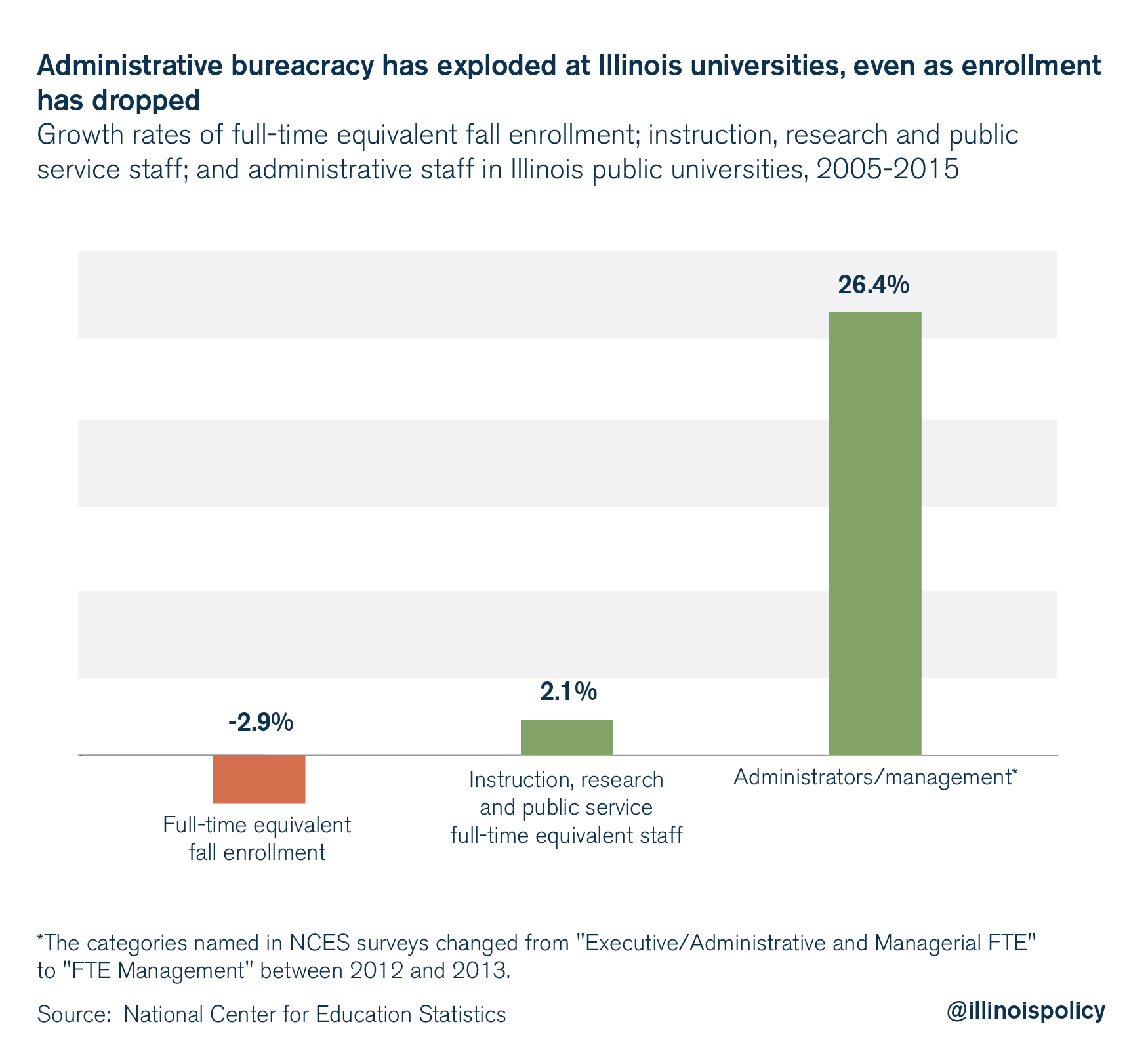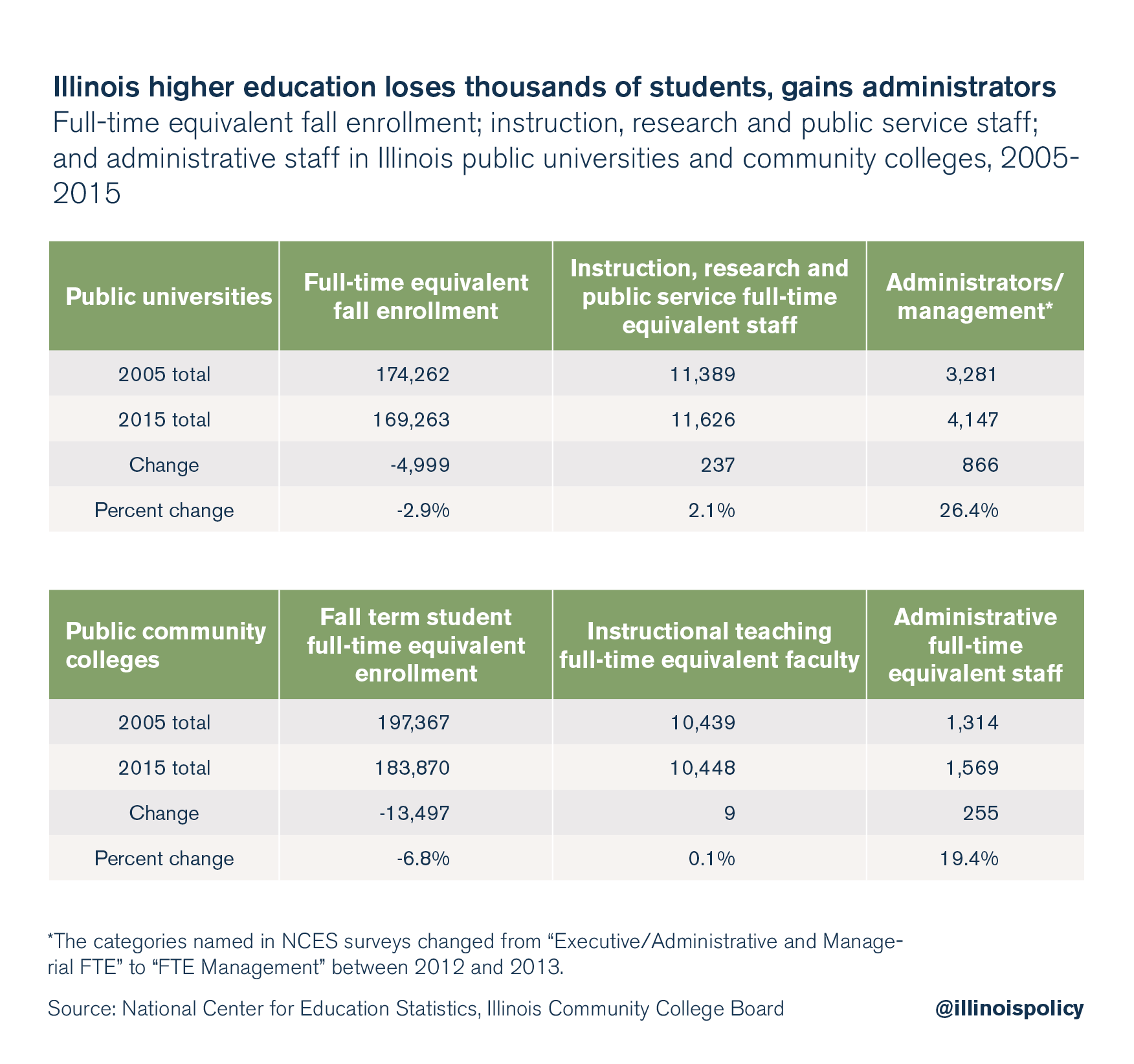Bloat expands as enrollment drops, tuition spikes in Illinois higher education
Growth in administrative bloat is sucking up money that would otherwise go toward the classroom and tuition grants for low-income students in Illinois’ higher education system.
Illinois higher education is facing a crisis. Tuitions have doubled over the past decade, and enrollments are down. And students with less means struggle to pay for their education while wealthier students are leaving for other states. According to The New York Times, Illinois lost a net 14,000 college students to out-of-state schools in 2014 alone.
Meanwhile, a decadelong administrative hiring spree has inflated costs and made higher education less affordable for the students it is meant to serve.
National Center for Education Statistics data show full-time equivalent administrator positions at Illinois public universities increased by 26 percent from 2005 to 2015. In contrast, full-time equivalent fall student enrollment dropped by almost 3 percent over that time. Teaching- and classroom-related functions, including instruction, research and public service full-time equivalent positions, increased by only 2 percent.

The trend is the same for Illinois’ community colleges.
Public community colleges saw a 19 percent increase in the number of full-time equivalent administrator positions, while full-time equivalent instruction, research and public service staff remained virtually unchanged, according to the Illinois Community College Board.
By comparison, full-time equivalent enrollment in community colleges dropped by almost 7 percent.

Growth in administrative staff inflates higher education costs
Politicians and public officials often point to the recent two-year budget impasse as the cause of Illinois’ higher education woes. But while the budget impasse and short-term cuts resulting from it were indeed harmful, the Illinois higher education crisis has been largely self-inflicted.
The increasing number of administrators has contributed to spiking tuitions across the entire state. Combined student tuition and fees grew anywhere from 74 to 112 percent between 2006 and 2016, depending on the university, according to a recent Illinois Policy Institute report. As Illinois’ tuitions increase, the state’s public universities struggle to compete with neighboring states for students. For example, the University of Illinois’ tuition and fees are now almost $6,000 higher than both Indiana University’s and the University of Wisconsin’s, and nearly $8,000 higher than the University of Iowa’s.
A 2013 Illinois State Senate Democratic Caucus report on administrative staffing and enrollments found that much of the revenue growth from tuitions and fees has “been used to support an increasingly larger bureaucracy and excessive administrative salaries.”
More recent data on staffing and enrollment confirm the Senate Democratic Caucus report’s findings of administrative bloat.
That administrative bloat not only increases operating costs, but it also pushes up pension costs and sucks up money that would otherwise go toward the classroom and tuition grants for low-income students.
Despite the fact that state appropriations to higher education have increased by more than 60 percent over the last decade – to $4.1 billion in 2015 from $2.5 billion in 2006 – pensions are taking up a growing share of those funds.
Fifty percent of what the state appropriates to higher education now goes to pay for retirement costs – up from 20 percent just a decade ago.
Higher education in Illinois needs to be streamlined to better serve those who pay tuition – students should be prioritized over administrators.
The bloated higher education bureaucracy is the first place Illinois should look when dealing with this crisis. Reducing the number of administrative positions would be a good first step in making higher education more affordable for Illinois students.
Otherwise, students will continue to cross state lines for better opportunities.

